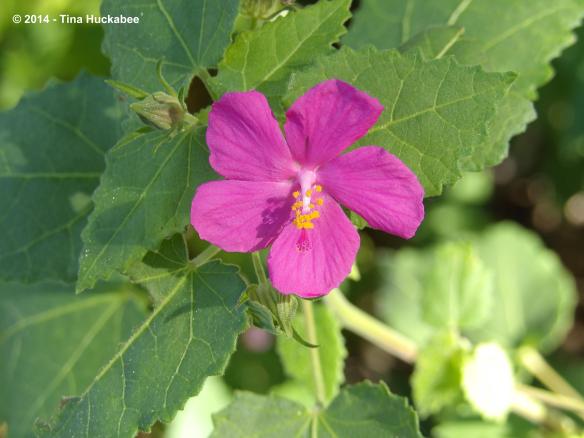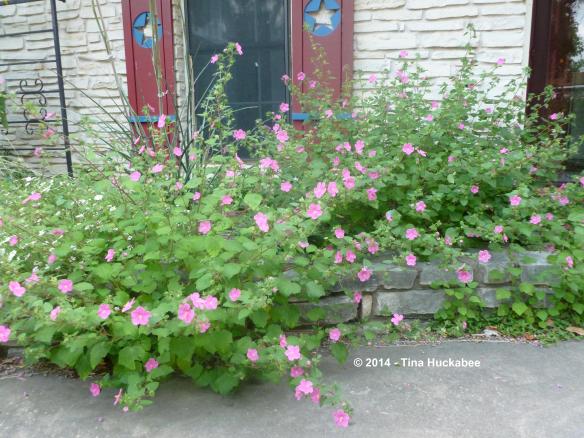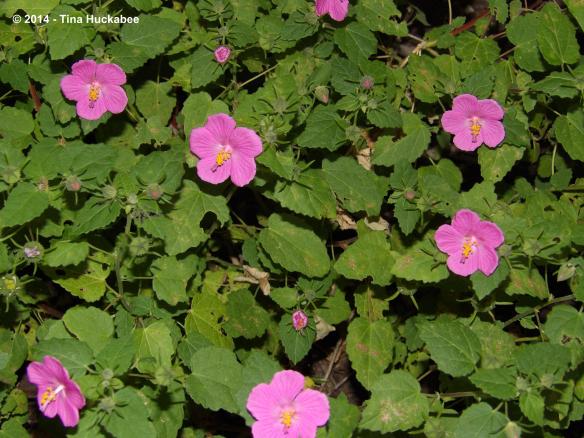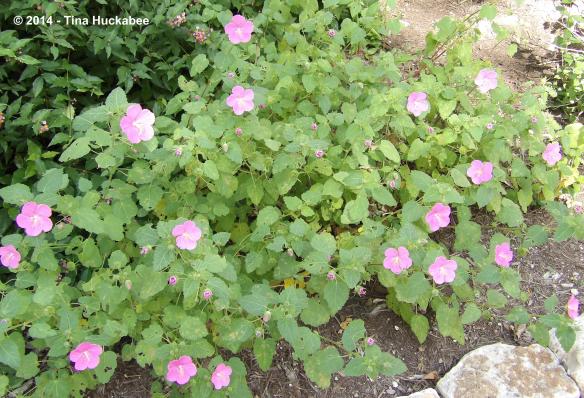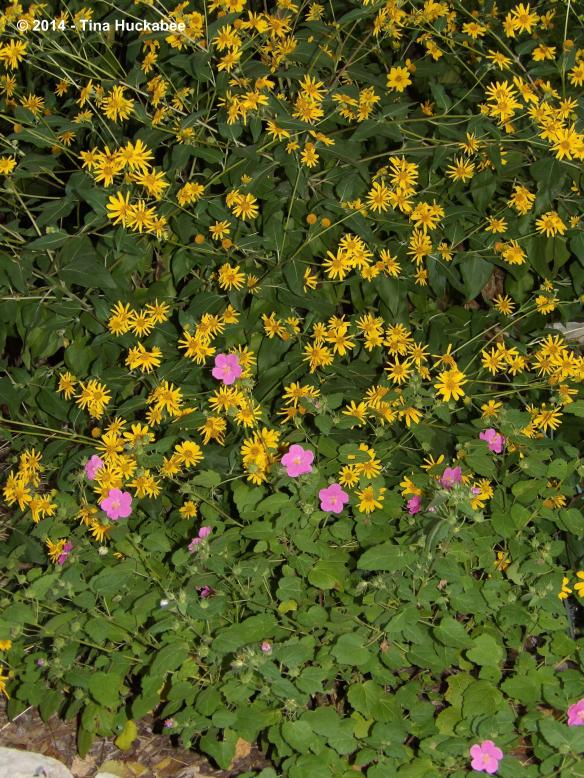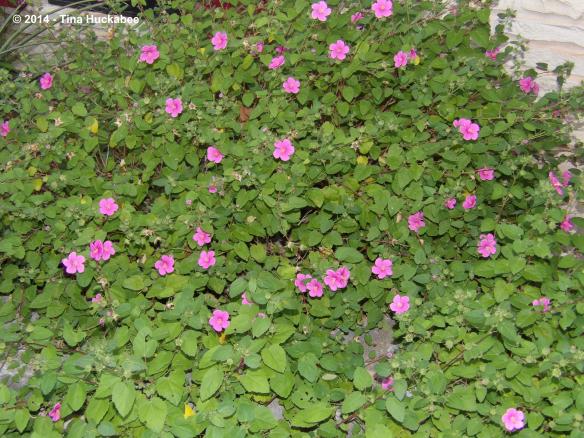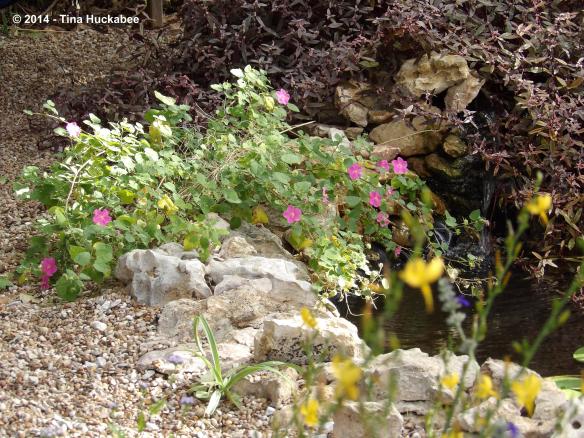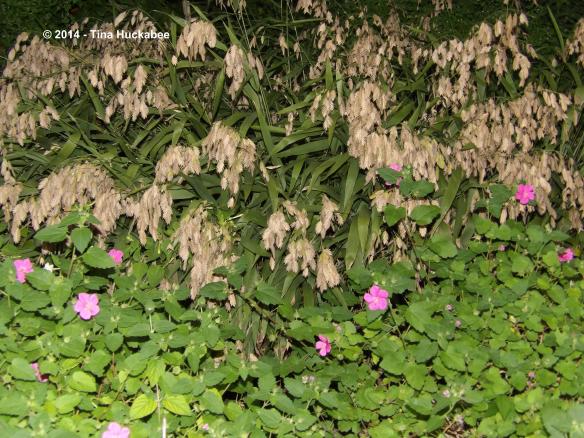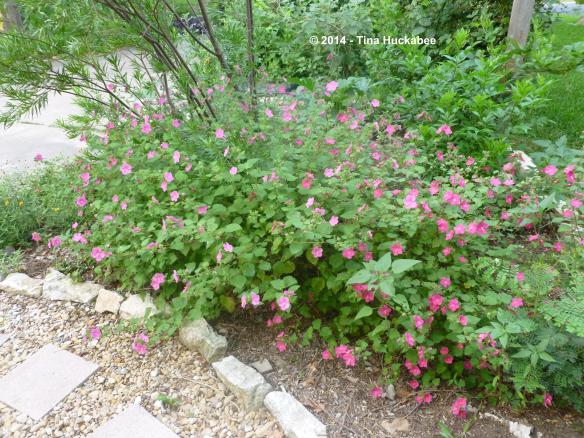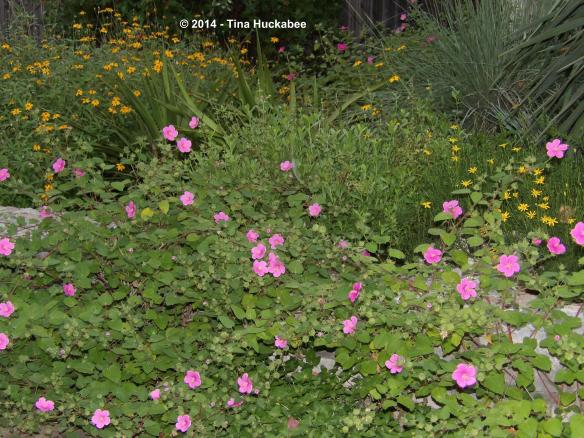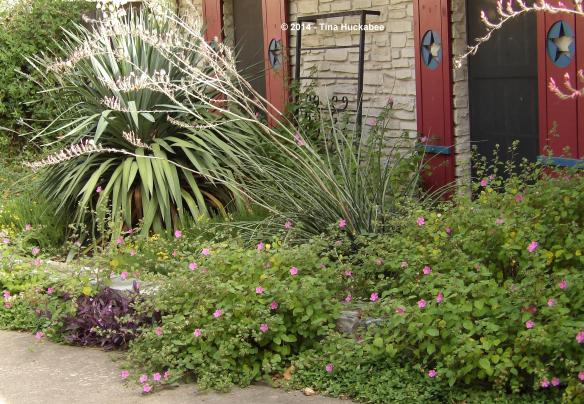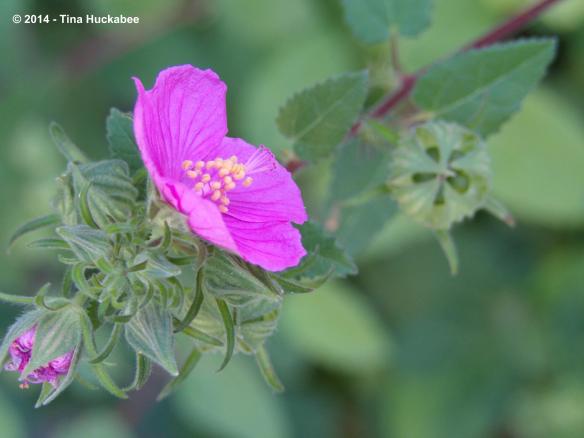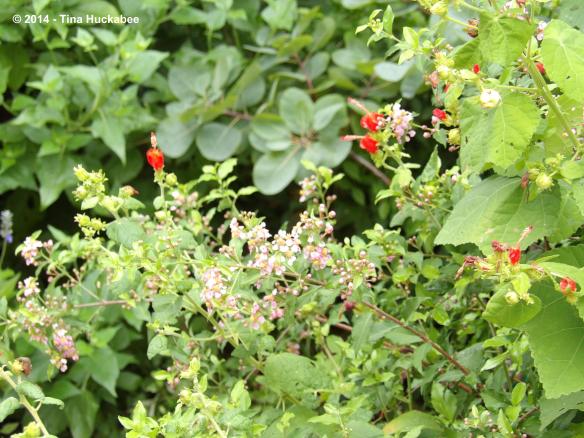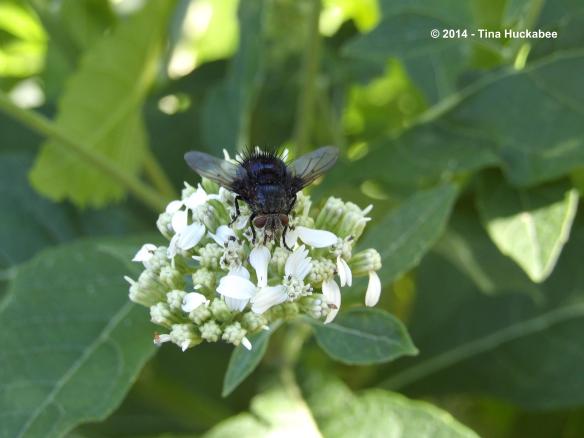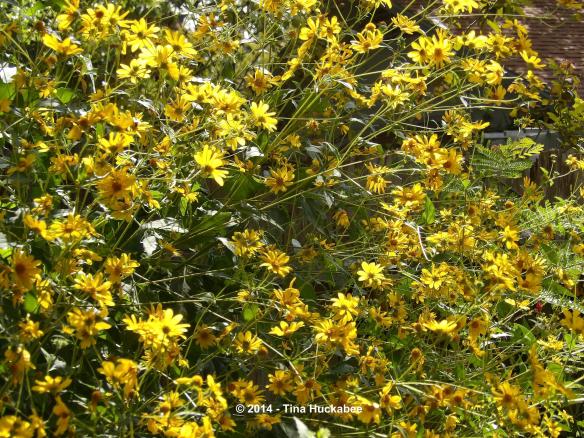Thanking Carol at May Dreams Gardens for the opportunity to share blooms, I’m joining in with a few of my own June picks and pics! May was a wet month in my garden–17 inches wet–and many of my plants have enjoyed foliage growth, but are lagging behind in flower production.
Additionally, this week of June 15–21 is Pollinator Week, which is promoted by Pollinator Partnership, a nonprofit educational organization dedicated to the advocation and protection of pollinators. Pollinators of all sorts–bees, butterflies, moths, bats and birds–are required for much of our food production and are vital to a healthy ecosystem. Of course home gardeners know this and those of us who honor blooms are keenly aware of the synchronicity of those blooms and their pollinators.
This Horsefly-like Carpenter Bee, Xylocopa tabaniformis, is a common visitor to my gardens.
Here, she contentedly works the bloom of a Engelmann or Cutleaf Daisy, Engelmannia peristenia. Most of the blooms in my gardens attract something in the pollinator category–whether I get it in photo form, or not.
Heartleaf Skullcap, Scutellaria ovata, a great friend to the above bee species, maintains its grey-blue garden invasion, though it’s past its blooming peak for this year.
It combines well with other blooming perennials, including Turk’s Cap, Malvaviscus arboreus var. drummondii.
Turk’s Cap has grown tall and the foliage is lush. The flowers are finally appearing in great numbers–tardy for this long-flowering native shrub.
I’m so glad it’s blooming and I’m sure the hummingbirds are too.
Coral Honeysuckle, Lonicera sempervirens, are gracing the garden with a second flush of tubular beauty on this hardy vine.
With lots of rose action for this June Bloom Day, the Knock-Out rose delivers its usual stellar standards of bloom quality.
Subtler blooms open on the old Jackson and Perkins pretty-in-pink, Simplicity rose.
There are two Simplicity shrubs remaining from the seven planted before I moved into this house in 1985. Tough and beautiful roses, I thank the former owners for their choice. While I’ve never observed native bees at either of these two rose plants, honeybees, butterflies, and moths are frequent visitors.
Continuing the pink parade are the blooms of the Red Yucca, Hesperaloe parviflora, flower stalks, which are not red at all,
… and Rock Rose, Pavonia lasiopetala,
… and Winecup, Callirhoe involucrata,
…and Four O’Clocks, Mirabilis jalapa,
…and the pink-to-my eyes, Purple Coneflower, Echinacea purpurea.
Coneflowers are convivial and play nicely with everyone in the garden. They are constantly friended by a variety of butterflies, like this skipper.
…and make good garden buddies to many other plants, like lavender.
I wish I could remember the name of the lavender variety. It’s a wise gardener who keeps plant labels. Alas, I’m not always a wise gardener and sometimes lose my labels to the jumble of my supply and equipment shelves–or to the compost pile. The lavender variety that grows in my garden accepts the twists-n-turns of Central Texas’ extremes of drought-n-flood.
Shaking up the pink and adding some orange crush to the garden is the unknown passalong variety of daylily blooms that are now unfurling their glory each morning.
Welcome to summer!
What gorgeous flowers do you have in the garden this June? Please share and then pop over to May Dreams Gardens for a look at blooms from around the world. And if you don’t have flowers that attract a variety of pollinators, check out your local nursery and purchase some plants or seeds–herbicide and pesticide free–to give pollinators a place to thrive.



















